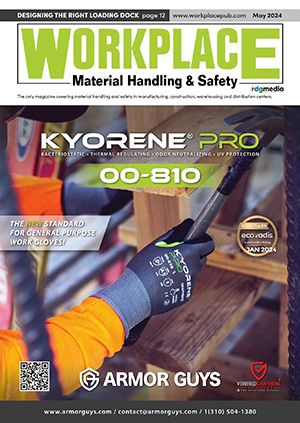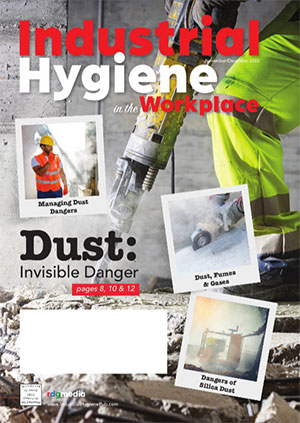Caster Conundrums: Simple Solutions for Major Transport Problems
 Manual carts and casters might make material transport possible, but it doesn’t always make it safe or optimal. That’s something many material handling operations unfortunately find out the hard way—after employees have already begun to suffer carpal tunnel or back pain; medical costs and insurance premiums have spiked; and productivity has waned.
Manual carts and casters might make material transport possible, but it doesn’t always make it safe or optimal. That’s something many material handling operations unfortunately find out the hard way—after employees have already begun to suffer carpal tunnel or back pain; medical costs and insurance premiums have spiked; and productivity has waned.
One of the reasons we find manual solutions to be ineffective is due to the combined physics of the cart’s casters, the payload, the surface traveled and the individual physiology of the employee. Musculoskeletal disorders (MSD) risk is in the details and, thanks to modern science and technology, it’s possible to accurately assess and address it.
The Costs of Problematic Carts & Casters
The consequences might be complex and far-reaching, but the source of the issue is often simple: Manual carts frequently use casters that are not appropriate for safely and efficiently moving the necessary payload. The diameter, material, bearings, fork configuration and wheel design of the casters all play a role in the rolling performance of the cart. This is why improper casters make manual carts more difficult to move, increasing strain to the employee and inhibiting workflow.
Inadequate casters are also incapable of mitigating the excessive push/pull forces that cause MSDs. Though your employees may seem unaffected at first, over time, the cumulative strain from repeated overexertion can eventually cost them their careers and their health. Today, MSDs impact industries ranging from healthcare to manufacturing, and they cost American businesses upwards of $45 billion per year in workers compensation, increased insurance premiums, employee turnover and work stoppage.
In addition to face-value costs, the total loss of valued employees to debilitating injury is more difficult to quantify. Some employees may never be able to return to work, and businesses can suffer a brain drain of talent and experience that can impact productivity for years. The reality is that, despite the increasing use of automation, material handling in many industries still relies heavily on people. Many companies simply can’t afford to continue using underperforming material handling equipment and remain competitive.
Even those managing lighter duty operations should exercise caution when it comes to using manual carts. OSHA’s lifting guidelines are 50lbs, but some operations still see musculoskeletal injuries occurring with payloads as low as 40lbs. This is because OSHA’s payload limits are an estimate of what most individuals are capable of safely moving. Everybody is unique, and some physiologies will be more vulnerable to MSDs than others—especially when jobs require repetitive movement.
In general, manual carts and inadequate casters are risky for material handling operations, where payloads are at or just under the OSHA 50lb guideline. In fact, these types of operations can be particularly vulnerable, because the risks aren’t as easy for either employees or management to spot.
Simple Solution 1: Retrofit for a More Ergonomic Solution
Some material handling problems can be solved by upgrading the casters on existing manual carts. First, an equipment engineer should calculate what type of casters you will need, based on the load and the force needed to move it. However, larger, heavier duty casters alone are not always enough. Much of the time, a retrofit kit is needed to motorize the manual cart and adequately eliminate the dangerous push/pull forces employees experience.
In addition to payload calculations, formulating a safe and efficient caster solution also requires looking at the workplace environment. Should a cart need to operate outdoors, it will likely need a powerful motor to handle grass, potholes or uneven gravel. Similarly, certain types of casters and tire treads are needed to overcome the physics of inclines, carpeting and spaces with limited maneuverability at an indoor facility. The steeper the obstacle, the more powerful the motorized solution.
Using a retrofit kit, like the ones provided by Electro Kinetic Technologies, and performing a thorough assessment of the problem, manual carts can be motorized using new casters and controls. A retrofit kit is a convenient option for businesses that don’t want to invest in brand-new equipment, when there is still considerable value in the existing carts—especially if they were a relatively recent purchase.
Another factor in choosing to motorize a manual cart with a retrofit kit is the degree of specialization of the existing cart. Should a manual cart already have specific shelving, containers or necessary branding, it can be more cost-effective to retain those features, instead of making an entirely new equipment purchase. Should your operation already have the required tools and talent, installing a retrofit kit in-house can also save additional costs on motorizing manual carts.
Simple Solution 2: Upgrade from Manual to New, Motorized Models
Should an engineer conclude that your manual carts cannot be safely operated, replacing manual carts altogether with ergonomic motorized ones is also an option. Depending on operational needs, local tax incentives and insurance credits available, a new equipment purchase is often the most cost-effective long-term solution.
A new motorized cart can particularly benefit an operation that needs a material handling equipment overhaul tailored to their specific industry or application. Standard motorized carts come in a variety of forms. This can encompass utility carts, tool carts, mailroom carts, platform carts, scissor lift carts and even lockable security carts for valuable supplies and inventory. The application-specific features available can greatly improve productivity and workflow, in addition to facilitating safer material handling processes.
These types of standard motorized carts can typically handle payloads up to 4,000lbs and are designed to serve the needs of most businesses. In cases where a standard model will not suffice, ergonomic equipment engineers can design a custom solution. Custom motorized carts are typically needed for very heavy-duty or unique applications, where material loads can reach up to 40,000lbs. Motorized transfer carts, for example, are a custom solution often used as an alternative to a forklift.
Some lighter duty material handling tasks with unique loading and unloading needs could also require a custom motorized cart. Using roller tops and custom scissor lifts, equipment engineers can reduce MSD risks to employees who need to shift uniquely shaped materials onto storage shelving or up to work table height from the cart itself. This is where a thorough assessment of the operation becomes especially important: MSDs can occur during all kinds of seemingly innocuous tasks, and companies can’t solve problems they’re unable to identify.
When an outside perspective would be beneficial, engineers can do a walk-through of the facility to assess safety risks or efficiency issues. An engineer with experience providing custom carts for multiple different industries can leverage that experience in designing a creative solution that truly solves the problem and improves efficiency.
Whether the right solution is as simple as replacing inadequate casters or as extensive as a highly custom motorized cart, an investment in both engineering expertise and equipment keeps material handling operations safe, productive and competitive. WMHS
About the author: Raymond Erbe is President of Electro Kinetic Technologies.



